Dates 27 Sep 2015 – 28 Sep 2015 | ||
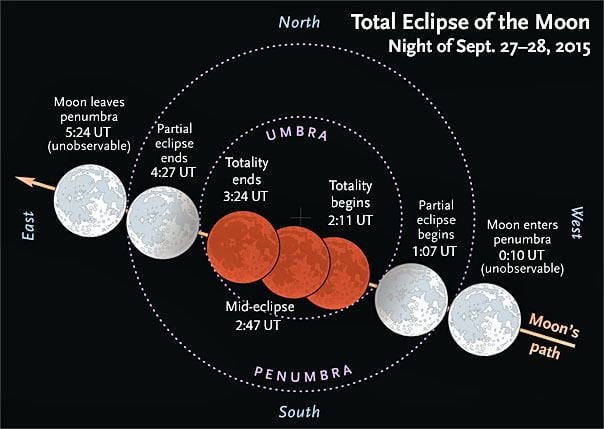 | ||
Other Instances April 2099 lunar eclipse | ||
A total lunar eclipse took place between September 27 and 28, 2015. It was seen Sunday evening, September 27, in the Americas; while in Europe, Africa, and the Middle East, it was seen in the early hours of Monday morning, September 28. It was the latter of two total lunar eclipses in 2015, and the final in a tetrad (four total lunar eclipses in series). Other eclipses in the tetrad are those of April 15, 2014, October 8, 2014, and April 4, 2015.
Contents
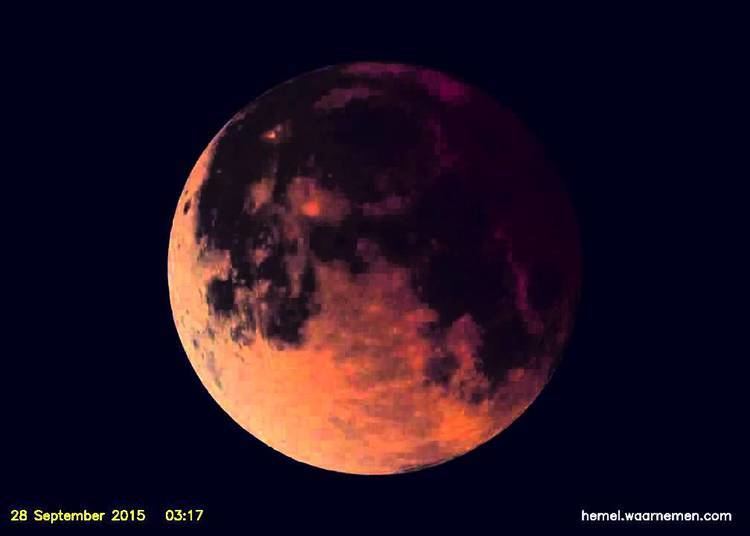
The Moon appeared larger than normal because the Moon was just 59 minutes past its closest approach to Earth in 2015 at mid-eclipse, sometimes called a supermoon. The Moon's apparent diameter was larger than 34' viewed straight overhead, just off the coast of northeast Brazil.
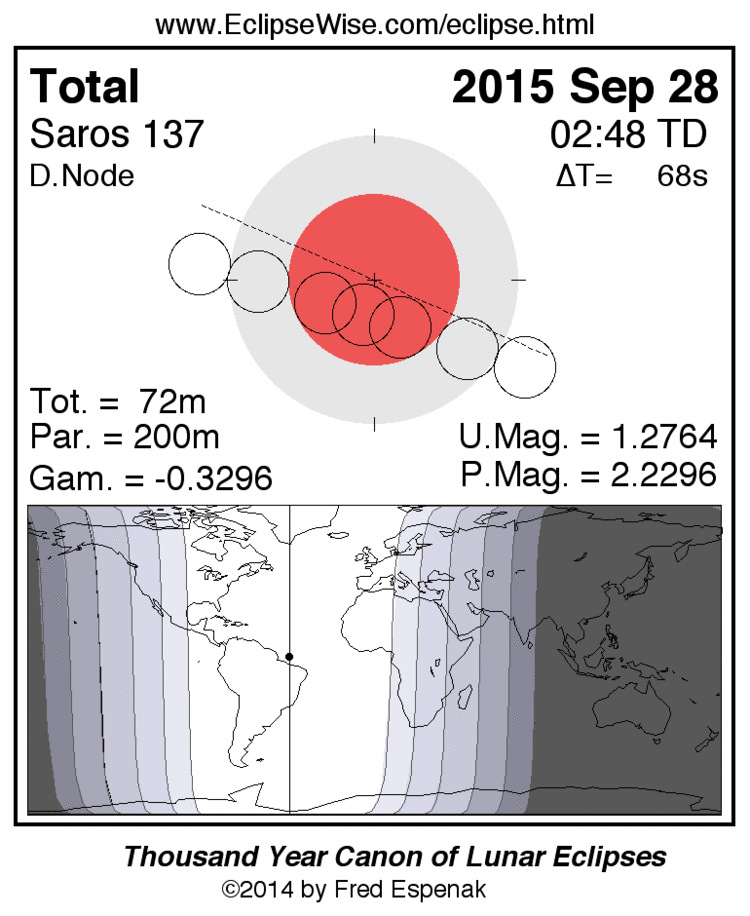
The total lunar eclipse was darker than expected, possibly due to eruptions of Calbuco volcano in April.
Visibility
The eclipse was visible over Europe, the Middle East, Africa, and America.
Supermoon
This eclipsed moon appeared 12.9% larger in diameter than the April 2015 lunar eclipse, measured as 29.66' and 33.47' in diameter from earth's center, as compared in these simulated images.
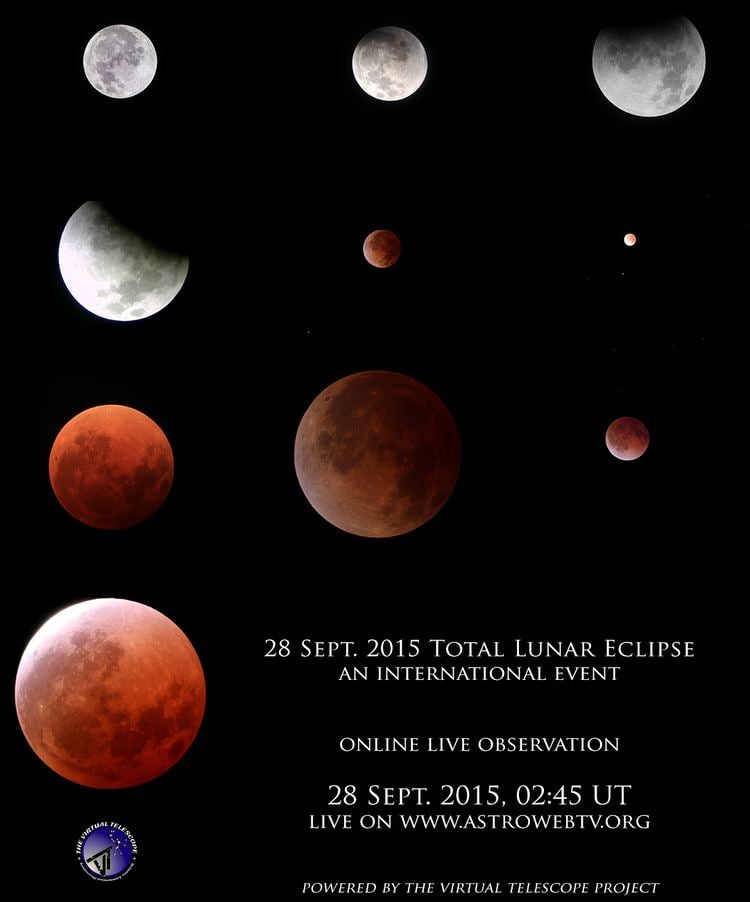
A supermoon is the coincidence of a full moon or a new moon with the closest approach the Moon makes to the Earth on its elliptical orbit, resulting in the largest apparent size of the lunar disk as seen from Earth.
Background
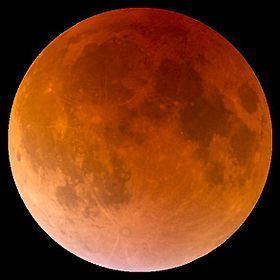
A lunar eclipse occurs when the Moon passes within Earth's umbra (shadow). As the eclipse begins, Earth's shadow first darkens the Moon slightly. Then, the shadow begins to "cover" part of the Moon, turning it a dark red-brown color (typically – the color can vary based on atmospheric conditions). The Moon appears to be reddish because of Rayleigh scattering (the same effect that causes sunsets to appear reddish) and the refraction of that light by Earth's atmosphere into its umbra.
The following simulation shows the approximate appearance of the Moon passing through Earth's shadow. The Moon's brightness is exaggerated within the umbral shadow. The northern portion of the Moon was closest to the center of the shadow, making it darkest, and most red in appearance.
Timing
† The Moon was not visible during this part of the eclipse in this time zone.
* The penumbral phase of the eclipse changes the appearance of the Moon only slightly and is generally not noticeable.
The timing of total lunar eclipses are determined by its contacts:
P1 (First contact): Beginning of the penumbral eclipse. Earth's penumbra touches the Moon's outer limb. U1 (Second contact): Beginning of the partial eclipse. Earth's umbra touches the Moon's outer limb. U2 (Third contact): Beginning of the total eclipse. The Moon's surface is entirely within Earth's umbra. Greatest eclipse: The peak stage of the total eclipse. The Moon is at its closest to the center of Earth's umbra. U3 (Fourth contact): End of the total eclipse. The Moon's outer limb exits Earth's umbra. U4 (Fifth contact): End of the partial eclipse. Earth's umbra leaves the Moon's surface. P4 (Sixth contact): End of the penumbral eclipse. Earth's penumbra no longer makes contact with the Moon.Related eclipses
The eclipse was one of four lunar eclipses in a short-lived series at the descending node of the Moon's orbit.
The lunar year series repeats after 12 lunations, or 354 days (shifting back about 10 days in sequential years). Because of the date shift, Earth's shadow will be about 11 degrees west in sequential events.
Half-Saros cycle
A lunar eclipse will be preceded and followed by solar eclipses by 9 years and 5.5 days (a half saros). This lunar eclipse is related to two annular solar eclipses of solar saros 144.
